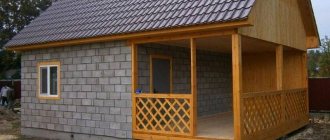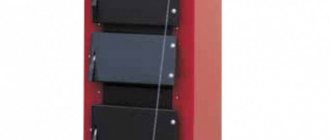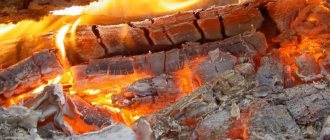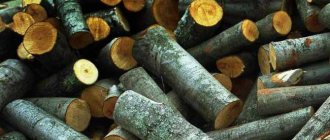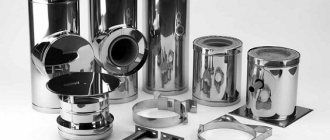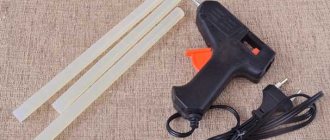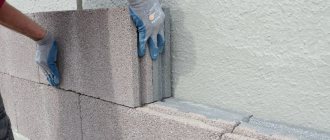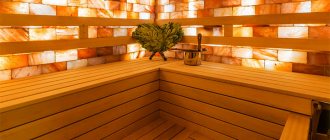What kind of firewood to choose for the stove, fireplace or barbecue? Do you need something hot or with less heat output, but capable of clearing the chimney of soot and soot? Resinous or with a faint aroma that makes your soul feel light and joyful? There are also general recommendations. Thus, during long-term storage, the quality of absolutely all firewood decreases. Especially if they get wet, rot and become overgrown with lichen or fungi. Do not use boards coated with paint or varnish for firewood.
It is more profitable to buy chopped firewood in large quantities at once. True, the smaller the “packaging”, the lower the likelihood of defects. Firewood in portioned polypropylene nets or other packaging is more expensive. Not only firewood with natural humidity is on sale, but also chamber-dried firewood, the price of which is higher. The woodpile with rounded logs looks beautiful. There are people who willingly buy European firewood, considering it a convenient replacement for natural wood. When purchasing firewood, it is advisable to check the type of wood and the region from which it was delivered.
Rounded firewood in a woodpile
Birch firewood
Advantages . Birch firewood has always been considered the best: clean and hot. They burn with a high, hot flame, do not shoot, do not spark, and burn out completely. Many people love the delicious aroma that comes from a pile of fresh firewood.
Birch firewood
Difficulties . Birch firewood produces such intense heat that it sometimes causes fires. In any village they will tell you sad stories about a burnt house in which a strong fire was lit. And they will clarify that the poor fellows threw too much birch firewood into the stove at once. This usually happens in cold autumn or frosty winter, when they want to warm up a frozen house as quickly as possible. The dachas where people come for the New Year holidays often burn.
During long-term storage (more than two years), chopped birch firewood loses its special aroma.
Often rounded firewood is waste from plywood production
There is one more feature of this firewood. A village woman I know complained to me that her chimney was quickly becoming clogged with soot and soot. But she heats the stove exclusively with birch wood.
Instructions on how to properly heat a sauna
- The hardest part is kindling. First of all, open the valve in the pipe, otherwise carbon monoxide will not escape. Be sure to check that this condition is met before each kindling.
- Chop some wood and prepare 4 logs. In addition, you will need newsprint.
- Place 6-7 crumpled sheets of paper in the oven. Place wood chips on them, and mark 4 logs on top, preferably perfectly dry ones. Moreover, it is advisable to distribute the logs across the entire width of the stove, rather than stack them on top of each other.
- Light the paper under each of the logs and quickly close the firebox, otherwise you will release smoke. Don't be afraid, 95% of the time the fire will flare up, so you don't have to watch it with the firebox open.
- After 15 minutes, add more firewood. How often to add them in the future depends on their dryness, but in the first hour of the fire, the main thing is not to miss the moment - to add them when the old firewood, which has turned into coals, begins to break into several parts. After about 1.5-2 hours, the temperature in the firebox will rise significantly, and it will be possible to add fuel even when there are only coals left in the stove.
- Place new firewood as close to the door and as far from the chimney as possible. This way you will increase the area of contact between the fire and the pipe, thereby reducing the time it takes to heat the bathhouse.
- If there is good draft (this is evidenced by bright red, as if swollen, coals in the firebox), after 2 hours you can close the valve halfway. This will also reduce the time you spend heating the sauna and save fuel.
- It is better to steam brooms directly in the steam room, when it has reached at least 60°C.
- Do not start heating the sauna if there are wooden containers in the steam room (for example, a bucket from which you throw it) that are not filled with water. This will lead to their rapid drying out.
- If the sauna is new, heats well, and you are happy with the temperature, then you can start steaming. The valve can only be closed when all the carbon monoxide has left the firebox. If, after stirring the coals in the firebox, you see a bluish-greenish flame appear, then carbon monoxide is still present. In a bathhouse that is difficult to light and quickly loses temperature, it is necessary to remove all the coals from the firebox and completely close the valve.
In order for the bathhouse to always smell good and have good heat, you need to take care of the quality of the firewood. Bad firewood can cause unpleasant odors, such as mold or swamp, to appear in the sauna, and, in addition, much more firewood than usual may be needed to heat the steam room.
Pine and spruce firewood
Advantages . Pine and spruce firewood can be immediately recognized by its special resinous aroma. They are inexpensive. Often sawn spruce and pine boards left over from construction or renovation are used as kindling.
Firewood from spruce boards
Difficulties . This firewood cracks, shoots and sparks a lot, so you need to install a protective screen. Without it, there will be trouble, because not only sparks, but also hot coals fly out of the fireplace or stove onto the floor. Often there are flaming pieces of wood on it. There should not be any carpets or bedding in front of the fireplace or stove. A wooden floor must be covered with a sheet of metal, floor tiles or other non-combustible materials.
Not everyone likes to heat the stove in the bathhouse with pine or spruce firewood, because... there is a lot of resin in them, and there is too much ash left. Pine and spruce do not burn out as quickly as birch. You can get burned if you close the chimney opening before all the coals go out.
Pine and spruce firewood produces a lot of ash
A couple of phrases about calorific value
In terms of its chemical composition, wood is a rather complex material. It contains the main components - lignin and cellulose. But besides them, the tree contains:
- resins;
- proteins;
- tannins and other ingredients.
When logs burn in a stove (or simply when trees burn in a forest), these components interact with the air at a chemical level. The calorific value of wood (as well as any fuel), or thermal conductivity, is the amount of thermal energy that a unit of weight of the fuel material (in our case, 1 kg of wood) produces during combustion. Kilocalories are used to measure quantities.
The chemical composition among most tree varieties has minimal variations, which causes differences in the number of calories emitted. That is, the heat of combustion of some types of firewood can be as follows:
- for deciduous species the figure is 4460 kcal/kg;
- for coniferous species - 4560 kcal/kg;
- for mixed breeds – 4510 kcal/kg.
As you can see, the differences are minimal. At the same time, it is easy to understand that it is better to use coniferous wood for the stove due to its greater thermal conductivity. Only firewood is supplied to the market depending on volume, not weight. That is, the main criterion for choosing firewood is cubic meters. Density plays an important role here, because the higher it is, the heavier the wood.
For example, let’s take 1 cubic meter of birch logs as a starting point. Then the ratio of the volume of different rocks will look like this:
- oak logs - 0.75 cubic meters. m;
- alder logs - 1.1 cubic meters. m;
- pine logs - 1.2 cubic meters. m;
- spruce logs - 1.3 cubic meters. m;
- aspen logs - 1.5 cubic meters. m.
That is, 1 cubic meter of birch and 0.75 cubic meters. m of oak logs, 1.1 cubic meters. m of alder wood (and so on) will produce the same amount of heat. Knowing this, now, depending on how much firewood costs, you can get profitable savings for yourself.
Oak firewood
Advantages . Solid oak firewood from middle-aged trees burns for a long time, produces a lot of heat and a subtle aroma. They are considered valuable and are expensive.
Difficulties . You cannot cut down a young oak tree for firewood: the heat from it will not be enough. Old oak is also not suitable. The air becomes heavy and takes on the smell of charcoal. Not all people can withstand it. After burning such firewood, there remains more ash than firewood from middle-aged oak.
What are there
In order to choose the right firewood for kindling, you need to know the properties of wood species. The following characteristics of firewood exist:
- heat transfer coefficient;
- degree of flammability;
- amount of ash;
- smoke production during combustion.
Ideal firewood should have excellent flammability and heat transfer, produce little smoke and leave a minimum of ash after combustion. And these qualities depend not only on the type of wood, but also on the degree of dryness, that is, on the percentage of remaining moisture.
A freshly cut log burns poorly due to high humidity. That's why it's best to harvest firewood in the middle of winter. Previously, in villages it was customary to do this no earlier than “winter Nikola”, December 19th. At this time, the sap from the trees partially goes into the ground. The trees seem to be in suspended animation.
Linden firewood
Advantages . This is wonderful firewood with a honey aroma. I also like the wood itself, from which craftsmen carve beautiful products. The heat is soft and gentle, so cosmetologists believe that it is beneficial for the skin. Linden is used to heat stoves, fireplaces and baths during colds and sore throats.
Difficulties . For most people, linden firewood is a luxury. It is rarely possible to heat a stove with them. Linden wood burns evenly, but flares up slowly and produces less heat than other tree species.
Characteristics of the best tree species
Deciduous trees are, of course, better suited for the stove, because their fiber structure is dense. They burn tightly and give off heat well. This also includes fruit trees, which emit pleasant aromas when burned.
Although conifers also burn well, they just smoke and smoke a lot due to the high concentration of resin. In addition, they burn out quickly. In a word, let's move straight to hardwood.
Larch
To determine which wood is best to burn the stove with, you should familiarize yourself with each of the options in more detail, study their parameters in the light of the combustion process.
Oak
Oak is, first of all, a hard and valuable tree, and only then - fuel. This is why oak firewood is elite and therefore expensive. Note: real good pizza is cooked exclusively on oak wood.
Trees that are not too old (middle-aged, so to speak) are used as firewood, since they produce more thermal energy and combustion lasts longer. The heat that young trees give is too weak, and the room will smell of wood that is smoldering. As for the old ones, they leave a large amount of ash with smaller volumes of thermal energy, and the air in the house becomes “heavy”.
For this reason, it is advisable to burn oak in the fireplace.
Linden
Let’s immediately say that linden wood is ideal for heating baths. When burned, they emit a sweet aroma that has a beneficial effect on the respiratory system. It is difficult to ignite such wood, but the heat that is generated is long-lasting and persistent. It is also characteristic that they can be stored for no longer than two years.
Birch
Birch firewood is also hard (like oak), and therefore is also an excellent option for a stove. Of course, in terms of their ability to produce heat, they are somewhat inferior to oak, but they are approximately 20 percent superior to coniferous species in this indicator. Moreover, they burn for a long time, with an even flame, and do not spark.
The only drawback of birch wood is the large amount of resin, especially in the bark. Therefore, it is strictly not recommended to heat a stove with bark. And when burning the wood itself, a lot of soot is released, which settles on the walls of the chimney.
When birch wood burns, the house is filled with unique aromas, the air is disinfected, and the people who live there suffer less from respiratory diseases. We also add that a birch tree that has been left for more than two years loses these medicinal properties. Therefore, it cannot be stored longer than this period (as well as linden).
Aspen
There is not much to say about aspen firewood. They are not easy to light, produce little heat, and burn out fairly quickly. They are characterized by a long, bright flame and lack of smoking, which is why they should be used to clean the chimney duct. But if we talk about what kind of wood is best to heat the stove with, then the answer is obvious: definitely not aspen.
Alder
Alder is rightly called the “royal” tree. The fact is that this wood flares up quickly, contains a small amount of resin, releases a lot of thermal energy, but practically does not emit smoke. The ideal area for using alder is the “black” firebox in a bathhouse. Moreover, when burned, the tree emits a pleasant aroma that prevents colds.
We also note that with the help of this firewood you can also clean the chimney after resinous conifers. They are also great for barbecue, and alder sawdust is used for smoking meat and fish dishes. The wood dries quickly even in natural conditions, and is stored for more than three years. During this time, its characteristic aroma is not lost.
Poplar, willow
The stoves are heated with wood from both poplar and willow. But a significant drawback of both options is the rapid burnout, and even the insignificant (when compared with other breeds) cost does not provide savings, because heating the house will require a larger amount of this firewood.
Willow and poplar are definitely low-grade wood, which is bought only when it is not possible to buy something better.
Fruit trees
Such breeds are optimal for heating and can quickly warm up, but despite this, they are used mainly for smokehouses or fireplaces due to the fact that these varieties are rare.
Basically, such firewood can be obtained by cutting down old orchards. They (firewood) are stored in order to cook food over an open fire.
Willow firewood
Advantages . Willow firewood burns hot and burns out quickly. They don't shoot and smoke little.
Difficulties . Willow firewood is difficult to obtain unless sanitary cutting is carried out nearby. We have accumulated a lot of such firewood, because... A few years ago, three huge willow trees had to be trimmed with brittle, whose branches were clinging to the wires.
Brittle willow grows back quickly
Important component 3 - the correct combustion algorithm
We place two logs parallel to each other on the grate at a distance of 10-15 cm. Between them is a crumpled sheet of paper, which we cover with wood chips or shavings. The “seed” is completed by two more logs laid diagonally on top.
We set fire to the “seed”
Using a match or kitchen lighter, light the wad of paper in the “seed”. You cannot use flammable liquids to speed up ignition: gasoline, diesel fuel, kerosene, xylene, acetone, etc. If the firewood is damp and cannot be ignited, you can use a dry alcohol tablet. We wait for the characteristic flame noise to appear in the stove, close the firebox door and cover the vent (not completely).
Throwing wood into the stove
The “seed”, of course, will not be enough to light the stove. Therefore, to continue combustion, you will have to add firewood from time to time. The first time this is done 10-15 minutes after igniting the “seed”. We open the firebox door, level with a poker everything that remains of the “seed” and place the firewood in approximately 2/3 of the volume of the stove firebox.
In the future, a new portion of firewood is laid when the old one burns out - approximately once every 1-1.5 hours.
We complete the heating of the bathhouse
In winter, the sauna is heated for at least 5-6 hours, in summer it is faster - on average 3-4 hours. When the bath has heated to the required temperature, the firebox can be finished. We wait for the last portion of firewood to burn out, open the firebox door and check for bluish flames above the coals - signs of the presence of carbon monoxide. If everything is in order, close the vent, smoke valve and firebox completely.
After everything has been done, we open the doors of the steam room and the window so that the bathhouse can be ventilated. 15 minutes is enough for the bathhouse to be filled with fresh air. After that, close everything except the window. The bath should last for about two hours. Don’t be afraid, during this time it will not have time to cool, but the heat will become soft, uniform, and the steam will become light. Afterwards we close the window and begin the bath procedures.
There are three answers to this question: from a practical, health-improving and economically beneficial point of view.
- The first insists that hard types of wood should be used for a bathhouse, since they burn longer and produce more heat.
- The second states: it is preferable to take “healing” logs that have the most positive effect on the body.
- The third speaks about the advisability of using only firewood for heating that is obtained directly on site and, therefore, is inexpensive.
Aspen firewood
Advantages . This wood does not smoke, burns with a high flame, but only produces heat in a hot oven. Aspen is valued for its ability to clean the chimney of soot and soot. Poplar firewood has a similar quality, but to a lesser extent. They can not only heat the stove, but also put it in the stove at the end of the firebox.
Firewood from aspen and silver poplar, left after formative pruning of old trees
Difficulties . Aspen firewood burns slowly and produces little heat in a cool firebox. Aspen causes weakness in some people, so it is not the best wood for a bathhouse.
Basic storage rules
To get a high-quality product for lighting a hearth or fireplace, you need to cut down a tree in an ecologically clean area, where there are no exhaust gases or chemical production. There should be no delay in separating the trunk and crown in parts
It is important to dry the logs outdoors with good ventilation under a canopy.
The next stage is splitting into smaller elements. This way the logs dry faster and are easier to store. It is logical that the thinner the firewood, the faster it will dry. Therefore, it is better not to store them in the form of thick logs, but to chop them in the form of thin logs. You will also need brushwood—thin branches—for ignition. Rows are laid in several ways:
- Each next row of blanks is located perpendicular to the previous one. There must also be clearance inside the row;
- All logs are stacked in one direction, maintaining a gap between each piece;
- Laying in a circle. This method is called a “stack”, it involves stacking firewood in one direction. Under no circumstances should brushwood and logs be stacked tightly: circulation will be disrupted and they will begin to rot.
The woodpile is placed in a well-ventilated space, under a canopy or dense material. The canopy must have supporting pillars without walls to restrict air movement.
The woodshed must be covered with a roof to protect the wood from ultraviolet rays and precipitation.
It is not recommended to store firewood in a shed. Lack of sunlight will lead to moisture accumulation, fungus will form, and the woodpile will begin to rot. Also, precipitation should not be allowed to enter.
Before putting it into the stove or fireplace, the firewood must be kept in the living room for at least 24 hours. They are placed next to the stove, but not very close to the firebox (keeping fire safety in mind). For this purpose, a special niche is provided or decorative floor firewood holders are used.
The best wood for kindling is dry. Therefore, you should carefully consider its preparation and storage. Whatever type of firewood is chosen for the stove, the most important thing is not to forget about the features and differences in the properties of deciduous, coniferous and fruit logs.
Other fuels
In addition to regular firewood, stoves can be heated with other types of fuel:
Peat. The peat is pre-dried. However, when dried, it becomes inconvenient to use. It crumbles in your hands. At the second stage it is pressed. According to the technology, sawdust is added to it. As a result, briquettes are formed. They can also heat boilers with a water circuit.
Coal. Used as solid fuel. Characterized by longer burning than wood. It produces significantly more heat, so heating with coal is economically profitable. Suitable for boilers with a water circuit. Layers of coal are added to the wood fired stove.
Eurodrova. This is a type of fuel that is presented in the form of briquettes. They contain compressed sawdust without harmful materials. You can burn with eurowood in a stone or iron stove. Also boilers operating on solid fuel with a water circuit.
Sleeping firewood. Here you need to take into account the harmfulness of the process, since the wood is saturated with toxic oils.
Chipboard. Chipboard scraps are very popular; they are used to heat country houses. However, the combustion of chipboard is accompanied by the release of toxic gases. Improper use of chipboard can lead to equipment explosion. However, if you follow the recommendations that tell you how to properly heat the stove, fuel such as chipboard will produce decent heat transfer. Applicable in boilers with a water circuit.
Coal dust. Coal dust can be used to light the stove after it has fully warmed up. First, it is heated with firewood, and then a layer of coal dust is placed on top. The fraction must be large, otherwise attenuation will occur. Firing a furnace with a stump is an economically profitable process, given that it is formed from the long-term storage of coal. Can be placed in boilers with a water circuit.
Recommendations from experienced bath attendants
Before you start lighting the stove, it is recommended to take into account these useful tips:
When firing a sauna stove, it is not the intensity of firewood combustion that is important, but its heat transfer. A huge flame and strong draft are not indicators of high-quality kindling. Over time, sauna lovers acquire the ability to achieve the desired result by burning a smaller volume of fuel for a longer period of time.
Additionally, it is recommended to follow the rules for using the heater:
The above useful recommendations will help you avoid mistakes in the process of organizing bath procedures, and therefore make them more enjoyable.
Important component 2 - oven preparation
Now that the firewood has been selected, you can think about lighting the sauna stove. First you need to prepare it - we will melt it later. We follow the instructions:
- We clean the grate and ash chamber (ash pan) from ash and coals;
- Wash stones in clean water;
- We determine whether there is draft (chimney permeability) necessary for carbon monoxide to escape from the stove.
To do this, open the smoke valve in the chimney, the firebox and ash doors. Then we bring a lit match into the firebox and watch where the flame rushes. If it goes up, that is, it is drawn into the chimney, then everything is in order - there is draft. You can start kindling. Otherwise, you will have to first clean the chimney, since it is prohibited to heat the bathhouse without draft - the stove will “smoke”.
Drying firewood
Firewood can be purchased already dry, dried industrially in a special chamber or in an electric field. But it's expensive. It is better to know how to dry firewood naturally. At your dacha or personal plot, you can always find a place for a woodpile or woodshed, where the firewood will dry in any weather.
Such a woodcutter will not take up much space
If the firewood is stored in winter or autumn, it will dry quickly enough under the roof if the sides of the woodpile are left open. If there is no woodshed, the woodpile is covered with film or roofing felt only on top.
In winter, firewood does not so much dry as it freezes out, while the main drying process occurs in the warm season. If you learn how to stack firewood and do it correctly, even when the humidity is high, your firewood will continue to dry out.
